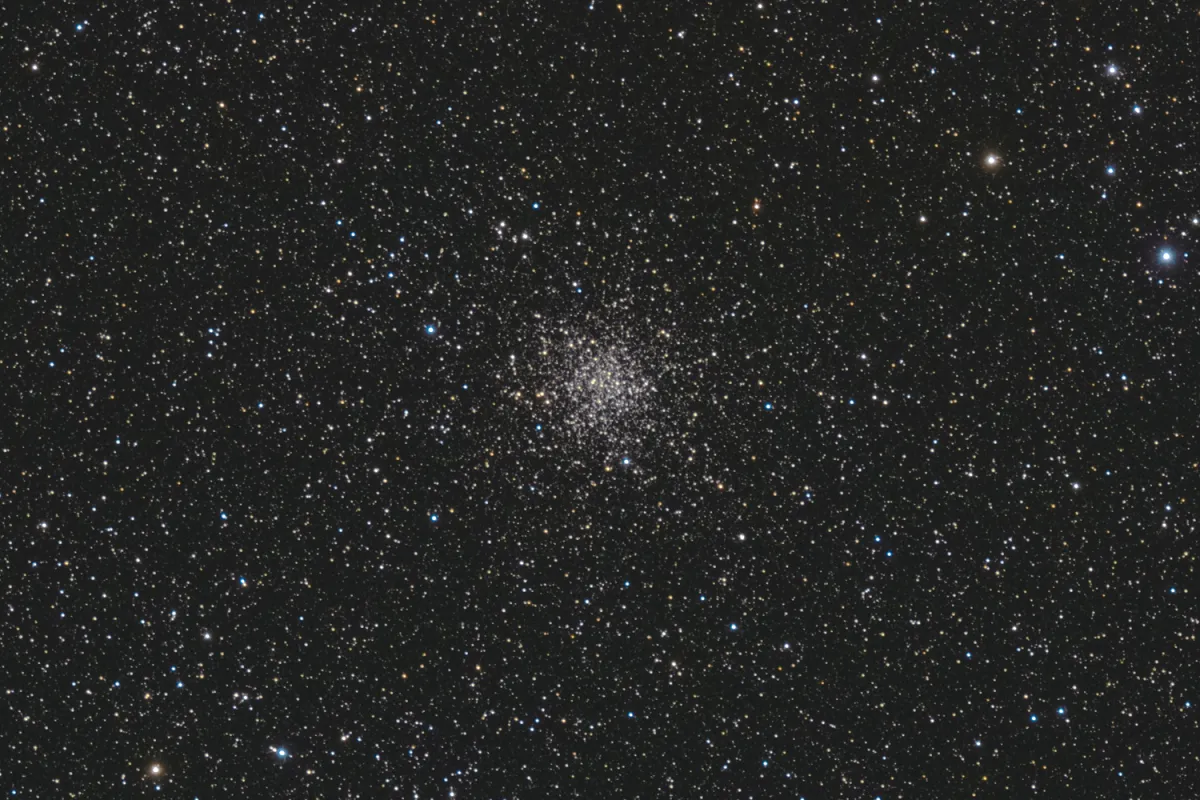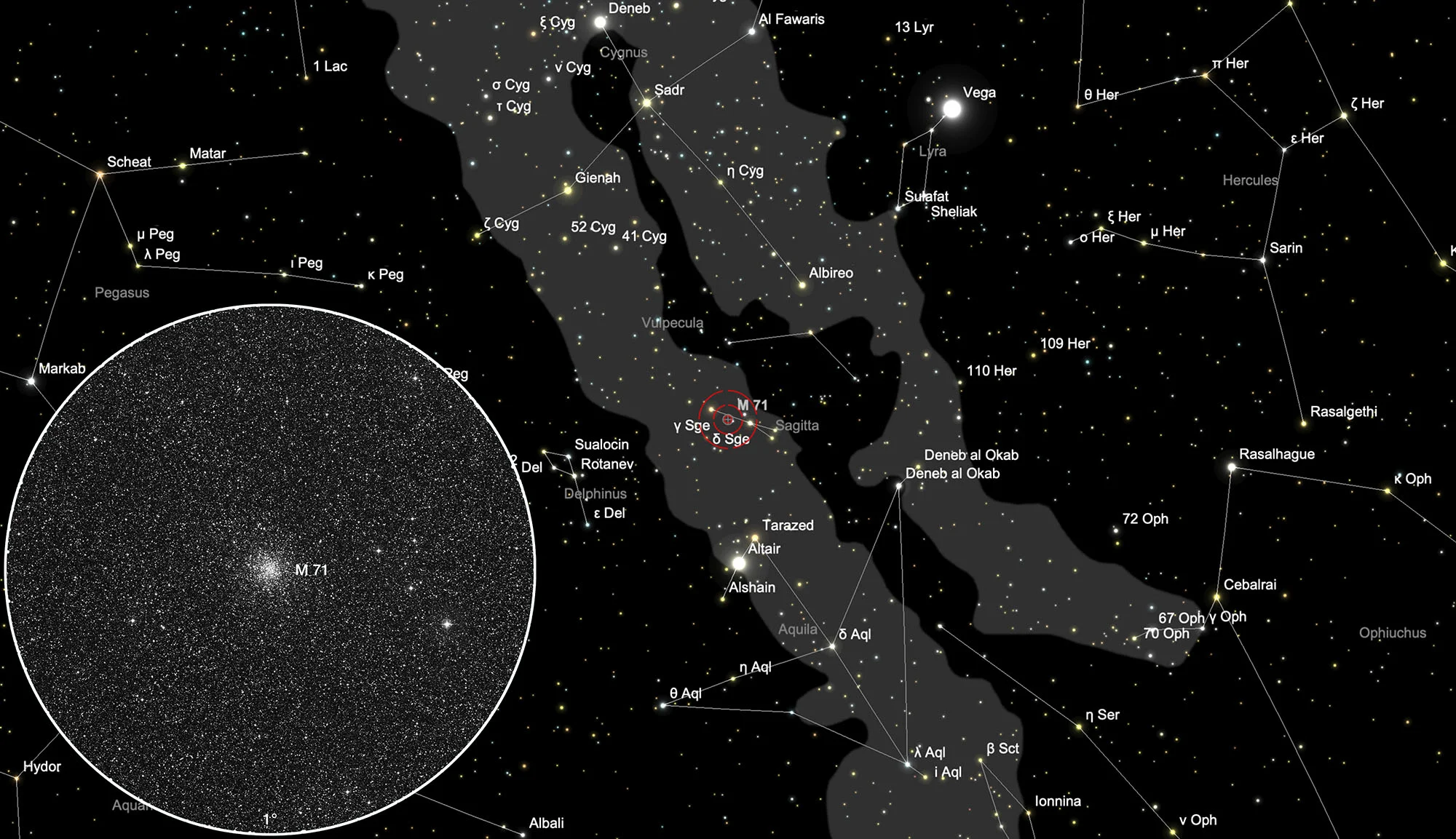Globular Cluster Messier 71

History
This star cluster was discovered in 1745 by the Swiss astronomer Philippe de Cheseaux. Johan Köhler also discovered the star cluster between 1772 and 1778 and recorded it in 1779. He was sighted by Messier's friend Pierre Méchain on 28 June 1780 and by Messier himself on October 4 of the same year. He writes: «M. Méchain discovered the nebula on 28 June 1780, between the stars γ and δ of the arrow. On October 4th M. Messier was looking for him: the light is very weak and it does not contain a star: the slightest light makes it disappear. It is about 4 ° below that [M 27] that M. Messier discovered in the Fuchs.» [281]
Physical Properties
Since its discovery, the classification of M 71 has been unclear. Since M 71 does not have a high star concentration in the centre and its elemental composition suggests a rather younger age, it was assumed that it was an open star cluster. In the 1970s, astronomers studied the relationship between the brightness and temperature of the stars in the cluster (Hertzsprung–Russell diagram). They found a characteristic trend in the stellar population that is typical of globular clusters. So M 71 was reclassified as an unusually small and looser globular cluster. M 71 is located about 13'000 light years from Earth and measures 27 light years in diameter. [215]
| Designation | NGC 6838 |
| Type | GCL (XI) |
| Right Ascension (J2000.0) | 19h 53m 46.1s |
| Declination (J2000.0) | +18° 46' 44" |
| Diameter | 7.2 arcmin |
| Visual magnitude | 8.4 mag |
| Metric Distance | 4.000 kpc |
| Dreyer Description | Cl, vL, vRi, pmC, st 11…16 |
| Identification, Remarks | h 2056; GC 4520; M 71; GCL 115 |
Finder Chart
The constellation Sagitta, which lies below the constellation Cygnus, is home to the globular cluster M 71. Halfway along the line connecting the star γ to δ Sagittae, the star cluster is found. The small constellation is best seen in the months of March to December.
Visual Observation
350 mm aperture: The star cluster has an interesting overall shape, more precisely, is V-shaped or triangular. With its modest number of stars, the cluster can be easily and completely resolved. M 71 is a simple Messier object and can be easily found even with small telescopes. Its triangular shape can be seen in middle telescopes and the individual characters or stars are visible in the entire cluster. — 14" PWO-Dobson, F:4.6 / TV-Nagler 13mm, 123x, 0.67°, Eduard von Bergen
